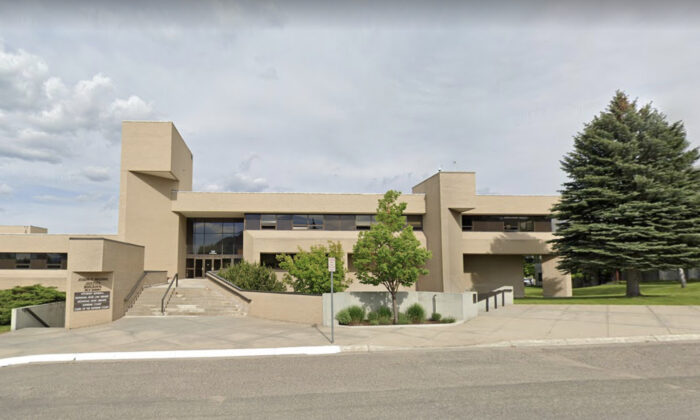
The simplistic version of what is happening in northern Shan State is that a united front of Bamar and non-Bamar resistance armies has liberated huge swathes of territory. The Myanmar army is on the defensive after being forced to abandon numerous small as well as major outposts and is about to lose the war. A more down-to-earth look at the situation, however, reveals a much more complex picture.
It is correct that the Brotherhood Alliance, which brings together the Myanmar National Democratic Alliance Army (MNDAA), the Ta’ang National Liberation Army (TNLA) and the Arakan Army (AA), has taken over large tracts of land in northern Shan State, including several towns and highways between them. But the bitter reality is that the resistance forces are not always entirely welcome in the areas they now control. Uniformed men from the TNLA, a Palaung group, patrol Shan-dominated towns like Hsipaw and Kyaukme as well as Kachin-inhabited areas around Namhpakka and Kutkai.

The MNDAA, a group made up of ethnic Chinese from the Kokang region east of the Salween River, seized control of Lashio, a multi-ethnic major city, in August. The AA fights for the interests of the Rakhine people, whose homeland is located in western Myanmar and borders Bangladesh. Tens of thousands of people have escaped the fighting in northern Shan State and, if they have cars, made it to Mandalay and as far as the old capital Yangon.
Poorer people have fled on foot or by whatever means available and sought refuge in surrounding forests or in areas bordering Thailand in the south. Those who remain complain about forced conscription of young people and having to pay taxes to their new masters. Many Kachin from the north have gone to the Taunggyi area in southern Shan State.
But, even there, people are far from safe. The Democratic Voice of Burma, an independent news outlet in exile, reported on June 5 that “residents from villages in Hsihseng, Taunggyi, Hopong and Pinlong townships stated that the military and its ally, the Pa-O National Army (PNA), has been forcefully recruiting and conscripting local youth since the end of May. Kyauktalonegyi residents [in Taunggyi] were trained, armed, and sent to the frontline.
” The PNA, once an ethnic Pa-O rebel group, entered into a ceasefire agreement with the central authorities in April 1991 and became what could be best described as an auxiliary force to the Myanmar army. Wealthy northern Shan State residents, regardless of ethnicity, have left Myanmar altogether and settled in Thailand and other neighboring countries. And everyone, rich and poor and whatever nationality they belong to in Myanmar’s ethnically most diverse state, have been caught in the crossfire between the warring factions and have had to endure intense and indiscriminate bombardments by the Myanmar Air Force.
The role of the TNLA in the war in the north and its unprecedented successes on the battlefield are especially remarkable. The Palaung, a Mon-Khmer speaking tribe who call themselves Ta’ang, live mainly in the hills around Namhsan, a town which once served as the capital of Tawngpeng, the only Palaung principality in the erstwhile Shan States. The Tawngpeng Palaung have adopted Shan culture and the Buddhist religion, and their hills are famous for their many tea estates.
There are also animist Palaung, who traditionally have eked out a living as slash-and-burn farmers, in the highlands north of Kengtung in eastern Shan State. The exact number of Palaung living in Myanmar is not known, but estimates vary between 500,000 and 600,000. The first Palaung rebel group, called the Palaung National Front (PNF), was set up in 1963 by a Shan-Palaung, Sai Hla Aung aka Sao Hso Lane, as a group subordinate to the Shan State Independence Army (SSIA).
The PNF became the 5th and 6th Battalions of the 1st Brigade of the original Shan State Army (SSA) when it was formed in 1964, uniting the SSIA and two other groups in Shan State. In 1971, the SSA set up a political wing called the Shan State Progress Party (SSPP), of which Sao Hso Lane became the chairman in 1981 (he had been commander of the SSA since 1979.) But by then the Palaung in the SSA had long broken away and allied themselves with the Kachin Independence Army (KIA).
Based on the old PNF, a new group called the Palaung State Liberation Organization (PSLO) with the Palaung State Liberation Army (PSLA) as its armed wing, was set up in 1976. It continued to be an ally of the KIA and, in 1986, the PSLO became the Palaung State Liberation Party (PSLP). In April 1991, the PSLP/PSLA, like so many other smaller rebel armies after the 1989 collapse of the powerful Communist Party of Burma (CPB) on which they had depended for direct or indirect support, entered into a ceasefire agreement with the Myanmar military and became a government-recognized militia force.
But that did not mean that peace and normalcy returned to the Palaung hills. Before long, government-recognized militia forces took advantage of the new order and began to cultivate opium poppies in the hills around Namhsan. Drug addiction became rampant and the sale and smuggling of opium and other refined narcotics undermined whatever law and order that existed in the area.
In January 1992, Palaung community leaders, who opposed the ceasefire agreement, met at the Manerplaw headquarters the Karen National Union (KNU) and the now defunct rebel alliance the National Democratic Front NDF and formed the Palaung State Liberation Front (PSLF). In the beginning, it was a purely political organization but as conditions deteriorated in the Palaung hills, it decided to resort to armed struggle, which led to the setting up of the TNLA in October 2009. Young recruits were sent to KIA-controlled areas in Kachin State, where they received training and got their first weapons.
In February 2011, after only a few months of exercises, 40 men with 27 guns crossed the Shweli River into northern Shan State. “It was like Granma,” a TNLA officer told me when we met at the Yunnan-Myanmar border in May 2018. He was referring to the name of the yacht Fidel Castro, Che Guevara and a handful of other revolutionaries sailed on from Mexico to Cuba in 1956 to start their revolution.
Within a couple of years, the TNLA had grown into a formidable fighting force. The leadership consists mostly of young and well-educated Palaung, including former government officials, and that makes it different from most other ethnically-based rebel armies in Myanmar, which are led by older people who have spent decades fighting in the hills and mountains of Myanmar’s frontier areas. The current armed strength of the TNLA is believed to be between 8,000 and 10,000, and they are much better armed and equipped than any of its rebel predecessors, which could, at most, muster 600-700 men in arms.
In December 2023, the TNLA seized control of Namhsan and it is very likely they were hailed as liberators by the town’s mostly Palaung population. But by then they had already begun to expand into Shan- and Kachin-inhabited areas, and today’s problems arose. The TNLA’s main ally is no longer the KIA, which operates in nearby, Kachin-inhabited hills and towns, and certainly not the SSA/SSPP, whose traditional strongholds are in the Hsipaw-Kyaukme areas.
Most of the TNLA’s impressive arsenal has been supplied by the MNDAA, another group that has also expanded its influence and power way outside areas where one would expect them to be operating. The first group among them, the Kokang Revolutionary Force (KRF), was set up in 1963 by Jimmy Yang, or Yang Kyin-sein (Yang Zhensheng), a local politician and banker and sworn enemy of General Ne Win, who had seized power in a coup the year before and abolished the previous federal and democratic constitution. The KRF became the 5th Brigade of the SSA when it was set up in 1964.
Jimmy Yang later joined a unified resistance against Ne Win’s dictatorship led by the ousted Prime Minister U Nu but left for France in 1973 and returned to Myanmar during a general amnesty in 1980. He died in Yangon in 1985. His influence in Kokang was gone as some of his men with Chinese backing in late 1967 formed the Kokang People’s Liberation Army (KPLA).
Led by the two brothers Peng Jiasheng and Peng Jiafu, the KPLA entered Kokang in January 1968 and officially merged with the CPB in August that year. Most of Kokang, then home to some 100,000 people, remained under communist rule until a mutiny among the rank-and-file of the CPB in 1989. The MNDAA was formed and, like three other former CPB forces — the United Wa State Army (UWSA), the New Democratic Army in Kachin State, and the National Democratic Alliance Army in eastern Shan State — it entered into a ceasefire agreement with the Myanmar military.
In 2009, fighting broke out between the MNDAA and the Myanmar Army, and the Kokang-based group began to expand and rearm. At the time of the 1989 mutiny and the subsequent ceasefire agreement, the MNDAA had no more than 1,000-1,500 soldiers. Today’s strength is not known but is believed to equal that of the TNLA.
The MNDAA’s seizure of Lashio, including the Northeastern Command headquarters of the Myanmar military, in August as well as crucial border-crossing points into China such as Chin Shwe Haw, sent shockwaves through the military establishment. The MNDAA has since then established its own administration in Lashio, but it is uncertain how many of its once 130,000 residents remain in the city — and how popular the new rulers of the city actually are. In April this year, the European Union condemned the MNDAA for carrying out public executions of dissidents within its own ranks, calling the sentences “an inhuman and degrading punishment that represents an ultimate denial of human dignity.
” The Irrawaddy reported on May 16 that the MNDAA forcibly recruits migrant workers and kills deserters. The AA was established in 2009, but not in Rakhine State. Its first units were drawn from ethnic Rakhine, or Arakanese, working in the Hpakant jade mines in Kachin State.
Initially trained by the KIA, the AA first saw action in 2015 when it fought against the Myanmar Army alongside the MNDAA in northern Shan State. While maintaining its presence in northern Shan State, the AA soon moved its main area of operation to Rakhine State, where it gained considerable support from the Buddhist majority population. Today, it is believed to have at least 10,000 men and women under arms and its leader, Tun Myat Naing, or, in Arakanese, Twan Mrat Naing, has appeared on several internet videos speaking excellent English.
Despite once working as a tour guide in Yangon, he comes across as a professional soldier with a vision for his homeland and its people. Like the TNLA, the AA is a new type of rebel army led by younger and more dynamic people. Another, older ethnic Rakhine entity, the Arakan Liberation Party/Army, signed the 2015 so-called “Nationwide Ceasefire Agreement” with the Myanmar military, but that is a tiny group and its handful of fighters were encamped with the KNU on the Thai border and never fought any battles inside Rakhine State.
The rapid rise of the rebel forces comprising the Brotherhood Alliance would not have been possible without massive support from their chief ally: the United Wa State Army (UWSA), Myanmar’s strongest and best-equipped ethnic armed group. The UWSA, with an estimated 25,000-30,000 soldiers under arms, controls what amounts to a self-governing, 20,000-square-km buffer state along the Chinese border in northeastern and eastern Shan State. As a Chinese-language website put it recently, the UWSA remains “nominally neutral” in today’s war, which, in plain language, means that they themselves don’t engage in any fighting with the Myanmar military — but they are the main source of weaponry for the Brotherhood Alliance as well as some of its ethnic Burmese comrades in arms.
Those guns, in turn, have been obtained from China, which raises questions about the Chinese role in the war. The Brotherhood Alliance pays lip service to the National Unity Government (NUG), which was set up by elected MPs who were prevented from assuming office when Senior General Min Aung Hlaing’s tanks rolled into Naypyitaw and Yangon on that fateful day, Feb. 1, 2021.
The NUG now includes other pro-democracy activists as well, and has been very active lobbying internationally for sympathy and political support for the resistance. Min Aung Hlaing’s and his military’s ill-conceived idea that they would be able to form a new, functioning government after ousting the elected one resulted in massive resistance, and a bloody war not only in the frontier areas but also, for the first time since the CPB was active there in the 1970s, in parts of the Myanmar heartland. But, needless to say, the course the war will take won’t be decided by some imaginary united front comprising resistance forces all over the country fighting for a common, nationwide goal and supposedly led by the NUG.
China, which has close contacts with the Brotherhood Alliance as well as the KIA and some other ethnically-based resistance armies — and Min Aung Hlaing’s junta — is the only outside power with the means and the motivation to be an interlocutor for peace in its troubled southern neighbor. It is not in China’s interest to see a full-scale war in Myanmar because it wants to secure its Belt and Road Initiative projects in the region, which include a vital outlet to the Indian Ocean through the only neighbor that can provide it with such an access. The next development to watch, therefore, should be how China is going to play its cards.
An educated guess is that China, once again — and with more pressure on all sides in the conflict than was the case under its previous, failed attempts to act as a peacemaker — will step in and negotiate a ceasefire. But that would only lead to maintaining the status quo with possibly some alterations and modifications. Not any way forward towards a democratic Myanmar, which is what most people in the country would like to see.
Bertil Lintner is a Swedish journalist, author and strategic consultant who has been writing about Asia for nearly four decades..














